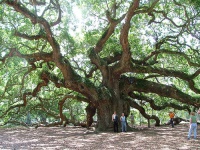
Angel Oak is thought to be the oldest existing entity east of the Rocky Mountains. This extraordinary live oak is over 1,400 years old and boasts a vast canopy in excess of 17,000 square feet, despite it not being very tall.Also known as Scarlet's Tree, it's survived countless hurricanes, floods, and earthquakes, including severe damage from Hurricane Hugo in 1989. The tree's forest home may have been one of the islands' many lumber sources for ship-building back in the 18th century, yet nowadays the park and tree are owned by the city of Charleston.The Angel Tree features in various local legends and books. Keeping the tree safe from encroaching urban development has lately become an issue, although so far it is still located deep enough in the forest to be safe.
Address : 3688 Angel Oak Road, Johns Island

Set in the Caw Caw Swamp, the Caw Caw Interpretive Center is home to vast natural, cultural, and historical displays. Dating back to the 18th century, this formerly slave-worked rice paddy exhibits earthen dikes, rice trunks, and canals.Many species of animals and plants make their homes in the wildlife sanctuary, with a landscape of beech and holly forests servicing resident otters, frogs, squirrels, and more. Self-guided canoe trips are possible, as is cycling, hiking, and rock climbing.The park features six miles (9km) of walking trails, including elevated boardwalks through the wetlands where visitors can sometimes spot alligators creeping through the swamps. Birdwatchers will delight in searching for rare swallow-tailed kites and bald eagles.
Address : 5200 Savannah Highway, Highway 17 South Ravenel
Website : www.ccprc.com
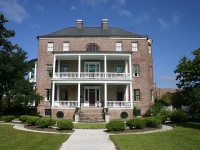
Founded in 1773, the Charleston Museum opened while the United States was still a British colony. It encompasses three historic buildings, aiming to preserve the unique culture and natural history of Charleston and the surrounding South Carolina Lowcountry.Exhibitions include cultural, historic, and natural artefacts, alongside two National Historic Landmark houses: the Heyward-Washington House and Joseph Manigault House. They are good representations of the graceful architecture and wealthy lifestyles of days gone by.Daniel Heyward built the Heyward-Washington House for his son, Thomas Heyward, who was among those who signed the Declaration of Independence. George Washington stayed here during a weeklong visit to Charleston, giving the house its name.Joseph Manigault House is a clear example of Federal architecture, influenced by the French Huguenots who moved to America to escape religious persecution. Both houses are furnished and decorated to appear as they would have done in the 1700s.
Address : 360 Meeting Street
Website : www.charlestonmuseum.org
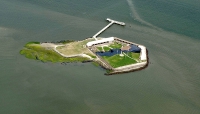
Situated on a small manmade island in the bay, the Fort Sumter National Monument guards the entrance to Charleston Harbour. It's one of the most important historic military sites in the country, built using 70,000 tons of granite and rock brought from as far afield as New York City.The first shots of the American Civil War were fired at Fort Sumter in 1861. With the secession of South Carolina, the Confederates demanded the surrender of the fort and after 34 hours of continuous bombardment, the Union forces had no choice but to relinquish their hold. The Union troops became the first prisoners of the Civil War.The fort became a symbol of resistance until it was retaken by Union forces in 1865 after nearly four years of continual attack, reducing most of the fort to rubble. Park rangers conduct free tours around the restored structure, which includes a museum with historical displays.
Website : www.nps.gov/fosu
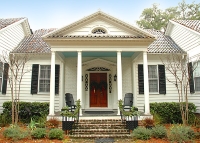
Magnificent plantations sit along the Ashley River and the highway towards Georgetown, the main attraction being Boone Hall Plantation. A majestic oak avenue leads to the estate, where travellers can visit the original slave quarters, cotton gin house, and the mansion, furnished and decorated according to the period.Still near the river and closest to Charleston, Drayton Hall is the oldest preserved plantation house in the USA. Dating from 1742, the Georgian masterpiece is a National Historic Landmark and the only plantation house on the Ashley to survive the Civil War intact.Conversely, Middleton Place was largely destroyed. But the south wing has been restored and contains an impressive collection of historic documents, silver, furniture, and paintings. Interestingly, its grounds are the oldest landscaped gardens in the country, designed in 1741.The estate also boasts stable yards filled with heritage breeds of cows, goats, pigs, and chickens. The ornamental lakes and surrounding gardens are home to roaming peacocks and other farm animals.Magnolia Plantation was founded in 1676 by the Drayton family. The plantation opened its doors to the public in 1870, allowing all comers to view the gardens. It thus became the oldest public garden in the country.The stunning decorative gardens can easily be viewed on tram tours that cover the grounds. South Carolina is blessed with many impressive plantation estates and there are hidden gems to be discovered in addition to the favourites listed here.
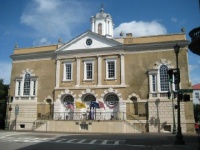
The British used Provost Dungeon for prisoners during the American Revolution. In 1774, the Old Exchange Building hosted the delegate elections for the First Continental Congress. Built in 1772, its original purpose was to assist with heavy import and export trade in Charleston.The Exchange was built in the Palladian style of architecture with a facade constructed from imported Portland stone. Having withstood war, earthquakes, and hurricanes, the building is strong. Part of the Half-Moon Bastion was excavated here and is the only visible section of the old Charlestown fort.Today, the South Carolina Daughters of the American Revolution run both the Old Exchange Building and the Provost Dungeon. All three floors of the main building are open to the public as a museum focused on the city's history and its role in American history.On tours through the dungeon, visitors are educated about the many pirates jailed during the 1800s. The Old Exchange Building regularly hosts symposiums on topics relating to Charleston's history, with the building also available to rent after hours as a function venue.
Address : 122 East Bay Street
Website : www.oldexchange.org

Charleston's most visited attraction, the South Carolina Aquarium features thousands of amazing aquatic animals. These include river otters, sharks, and loggerhead turtles in over 60 exhibits, representing the rich biodiversity of South Carolina from the mountains to the sea.The aquarium also affords visitors fabulous views of Charleston Harbor, while daily interactive exhibits and programmes for guests of all ages. Every visit reveals something new, with glimpses of new animals, budding plants, baby animals, and more.The institution provides a variety of opportunities to learn about conservation, animal life, endangered species, and environmental issues. It also houses creatures from further afield, with different exhibits illustrating various habitats.South Carolina Aquarium is also involved in a few initiatives, such as Good Catch. Organisers hope to foster awareness in the community around responsible harvesting and consumption of local seafood. They work with restaurants, fisheries, and caterers, in an attempt to protect the ocean.
Address : 100 Aquarium Wharf
Website : www.scaquarium.org
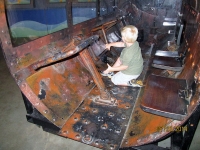
The Hunley was the world's first successful submarine, built on President Abraham Lincoln's orders during the Civil War. The submarine first arrived in Charleston by train 1863, proceeding to sink the warship Housatoni in 1894.During the attack, it sank and remained a mystery for many years. Modern navigation tools finally discovered the submarine in 1995, brought to land both for preservation and in order to piece together the history of the submarine's final hours.The submarine is now on display in a conservation tank at the Warren Lasch Conservation Center on the Cooper River. Visitors can see facial reconstructions of the Hunley crew, artefacts excavated from the submarine, and the legendary gold coin that supposedly saved the captain's life.
Address : Warren Lasch Conservation Center, 1250 Supply Street
Website : www.hunley.org

Travel Guide powered by Word Travels, copyright © 2023 Globe Media Ltd. By its very nature information in this travel guide is subject to change at short notice and travellers are urged to verify information on which they're relying with the relevant authorities. Neither Globe Media Ltd nor Travel Vogue can accept any responsibility for any loss or inconvenience to any person as a result of information contained above.